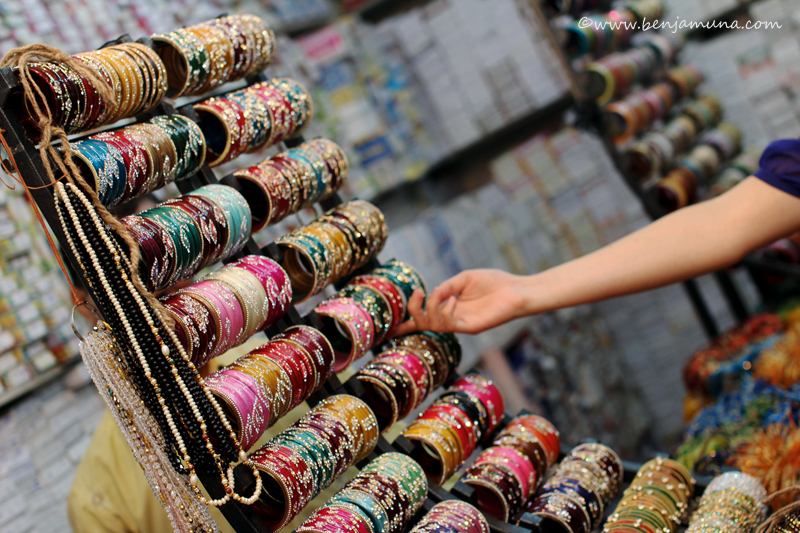The air is clammy. The heat clings to you. There are people everywhere. The narrow streets feel suffocating, Indian markets has its price. The colorful display makes you stop, the open door welcomes you. It’s as if you step into Aladdin’s cave; it sparkles and shines in red, orange, blue, turquoise, green, gold … all the colors of the rainbow, and even more. There are bangles made of glass and plastic, and bangles with the most beautiful “gemstones” attached. You stop, reach out a hand and you lose yourself…
Indian women love their bangles. One hardly sees an Indian woman without. Poor as rich, children and adults. Bangles play a major role for Indian women. They are not just for ornamentation, bangles are part of a tradition and a part of women’s identity. Bangles are round and rigid in form. The word is derived from Hindi; bungri (glass). They are made of various materials, such as gold, silver, platinum, glass, wood, other metals or plastics. Bangles are traditionally a part of the solah shringar of Indian brides. It is mandatory for newlywed brides to wear bangles made of glass, gold or other metals as they signify the long life of the husband as well as good fortune and prosperity. Traditionally, breaking of the bridal glass bangles is considered inauspicious.

The vendor is looking at your wrist, quickly, and lifts a simple bangle off the display on the wall. “Try,” he says. You feel pale and sweaty, but cajole the bracelet over your wrist. An experienced vendor makes no mistake, the size is perfect. “Careful,” he says, and slips the bracelet off your hand. The young woman who works together with him shows you how to take on and off bangles, several together, without breaking any. The thin glass rings are vulnerable.
In the Indian culture, the color of the bracelets has different meanings. Red means energy and prosperity, while green means good luck and fertility. Gold bracelets are supposed to give you happiness, whereas white means a new beginning and orange stands for success. Silver bracelets signify strength, and gold is the ultimate symbol of wealth and prosperity.
The various states in India have their own traditions and rituals for bangles and weddings. Bangles are called by various names. In the southern states, gold is considered very auspicious. Sometimes, green and gold are mixed since green means fertility and prosperity. Upcoming brides use the smallest bangle possible, put on with the help of oil. That means her marriage will be full of love and affection.
In Maharashtra, the bride bangles are significantly different from other states. Brides uses green glass bracelet in odd numbers. Green means creativity, new life and fertility. The green glass bracelets are mixed with real gold – usually a gift from her in-laws.
Over the years, bangles are adapted to modern trends, but they still play an equally important role as a thousand years ago. New forms and patterns have turned up, but for traditional ceremonies round glass bracelets or bangles made of metal still apply.
Colors, materials and textures – the vendor creates the most beautiful combinations … Fast gestures move the thin glass rings back and forth, some are taken away – others added. You nod your head in approval, or not… It’s like magic.. “Okay,” he says questioningly. And suddenly you have paid for a box of bangles. One more time again…




